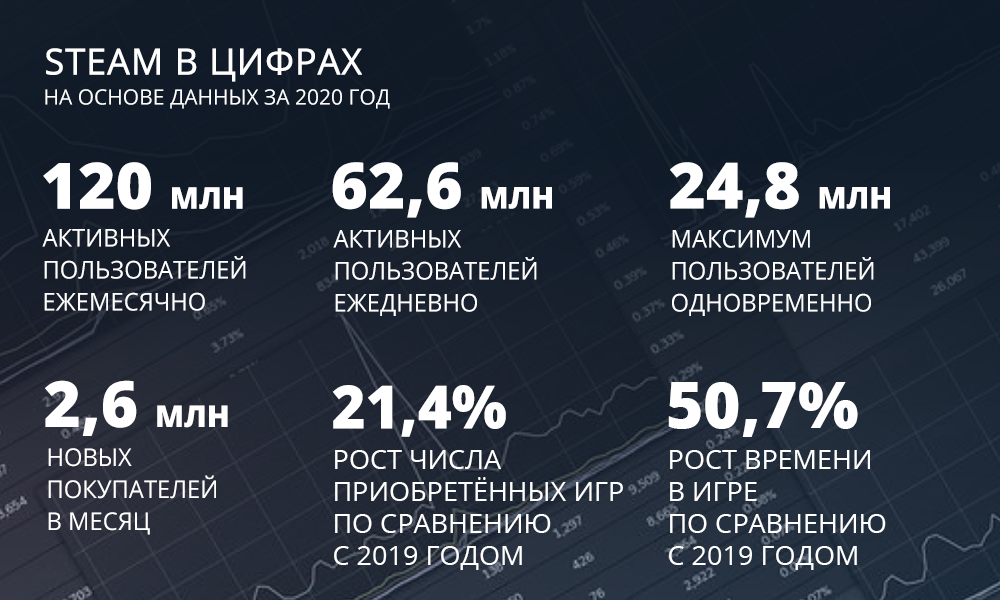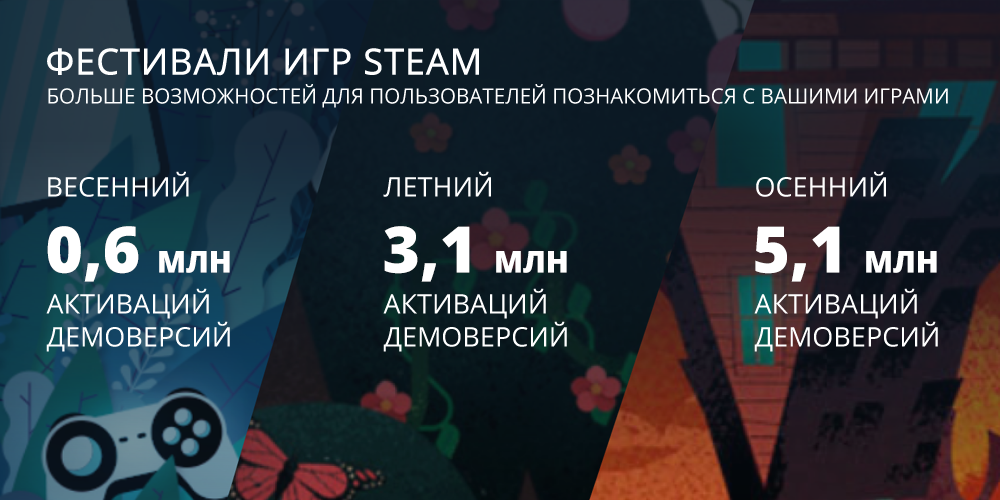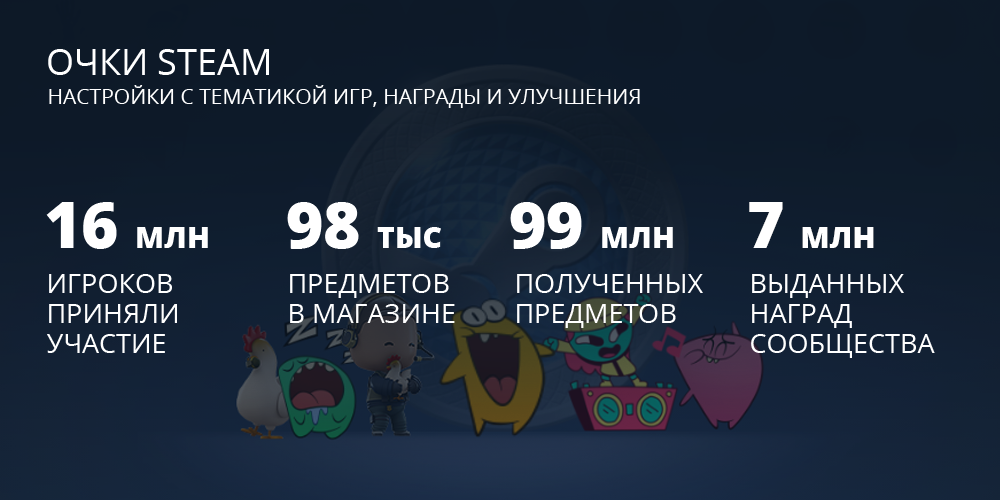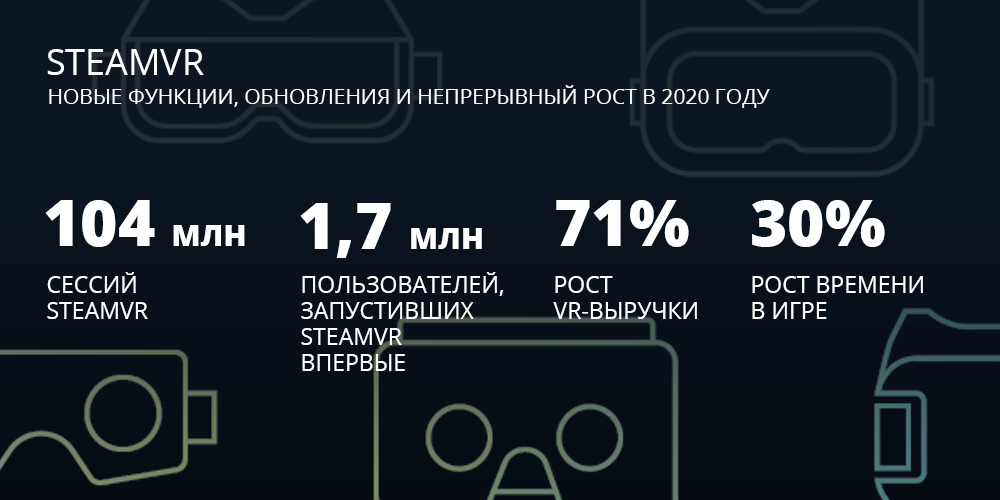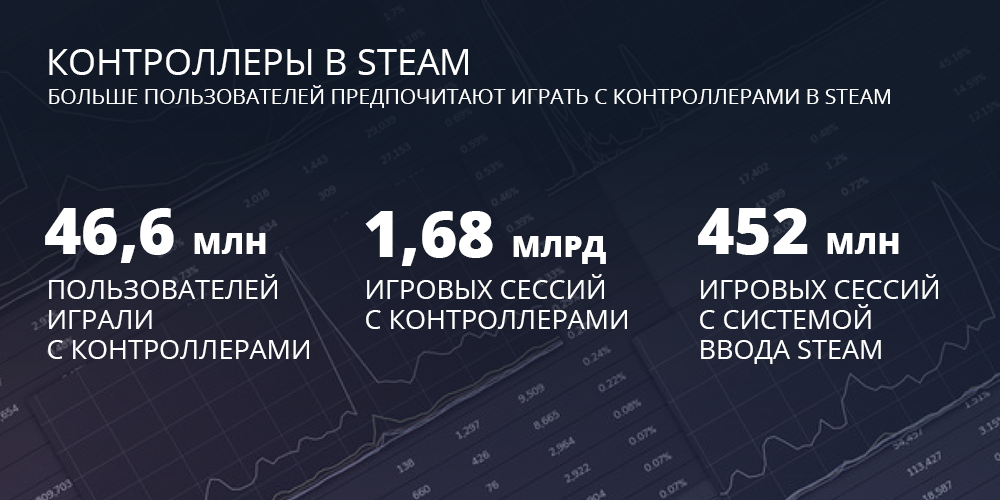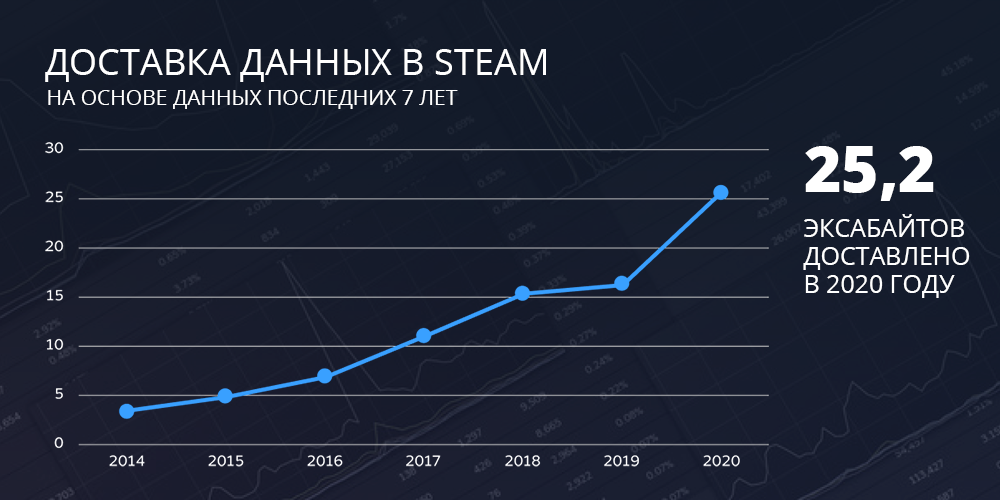Steam shared the results of last year. The platform described in detail what changes 2020 brought to it, and also published statistics with its business indicators. Below are the main ones.
The overall picture
As the Steam team noted, one of the main events of the past year was predictably the COVID-19 pandemic. Although the key metrics of the platform showed good growth even before the start of the global quarantine, it was the pandemic that contributed to new records:
- number of active users per month — 120 million;
- number of active users per day — 62.6 million;
- peak online — 24.8 million players;
- the number of new customers per month — 2.6 million;
- the total time in games for the year is 31.3 billion hours;
- increase in the number of purchased games — 21.4% (compared to 2019);
- the increase in time in the game is 50.7% (compared to 2019).
Sales and events
- During the year, Steam held many seasonal events, but the most successful in terms of revenue for developers and publishers were the summer, autumn and winter sales.
- During the winter sale, the number of games that earned more than $100,000 jumped by 36% year-on-year.
- The spring festival of Steam games attracted considerable interest from players — several dozen demos received 559 thousand activations.
- A larger-scale summer festival attracted 4 million users at once, who activated about 900 demos 3.1 million times. In addition, then the players added titles to the wish lists on average 82% more often than usual.
- The autumn festival has already led to 5.1 million activation demos.
Steam Points
Last year, the store launched Steam glasses. These points can be spent on rewards for other users, as well as on the purchase of stickers for chats and items to decorate the profile (animated background, avatar frames, and the like).
- 15.5 million players spent points to buy 99 million items.
- More than 2 million people have awarded 7 million other users of the platform.
SteamVR
- In 2020, gamers were actively buying VR games. Sales of such projects jumped by 32% during the year, and this is excluding the release of Half-Life: Alyx. Thanks to the game, the indicator increased by another 39%.
- 1.7 million users of the platform decided to launch a VR game for the first time last year.
- The demand for Valve‘s VR headset has been consistently high all year, but it was only at the end of 2020 that the company was able to meet it.
- More than 104 million virtual reality sessions have been held on the site. The average session lasted about 32 minutes. All this increased the total playing time by 30% compared to 2019.
- The annual growth of VR revenue was an impressive 71%.
Controllers
- The Steam audience using controllers continues to grow. In 2020, 46.6 million people played with gamepads. This is 14.8 million more than it was in 2019.
- The controller was used in 1.68 billion gaming sessions in 2020. For comparison, the year before, the number of sessions with the gamepad barely exceeded 1 billion.
- The number of gaming sessions with the Steam input system last year was 452 million (an increase of almost two times).
Traffic
- The global lockdown has dramatically increased the load on Steam servers. Already in March, download traffic jumped by 30-40%. But this did not become a record for the store.
- Steam managed to reach record levels against the background of the launch of Cyberpunk 2077. Even during preloading, traffic increased to 26 terabits per second and rose to 52 terabits per second at the time of the game’s release.
Plans for 2021
In addition to summing up the results of 2020, Valve also decided to share plans for 2021. There are six potential areas of work:
- launch of Chinese Steam;
- improving user interaction (the store team wants to fix the flaws that players face when buying, installing and during the game);
- facilitating Steam login via the mobile app;
- development of new ways of remuneration;
- popularization of the store for Linux users;
- development of the “Steam Labs” system.

